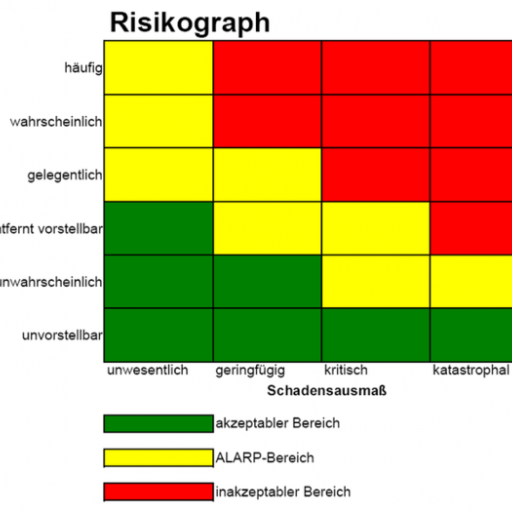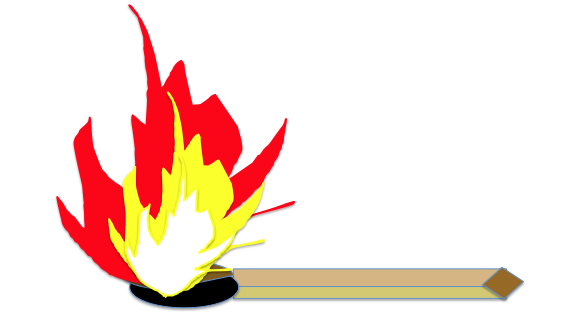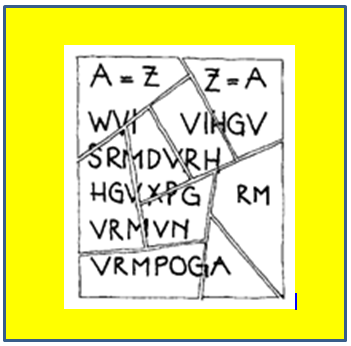Risk management is a systematic process for "identifying and assessing risks, and managing responses to identified risks" (Wikipedia). The aim is to ensure a high level of safety for your volunteers and leaders at all Jungschar events.
Risk management is a systematic process for assessing risks and managing responses to them (Wikipedia).
The aim is to ensure a high level of safety for your young people and leaders at all events.
Step 1: Analysis of potential hazards
In doing so, you go through the individual elements of your planned event. This includes, in particular
- all activities,
- the complete area in which the event takes place (e.g. also the way to and from),
- peculiarities of children in general (e.g. normal lower mental alertness of children in road traffic) as well as
- peculiarities in children in particular (e.g. mögliche asthma attacks in children with corresponding disease).
As you go through each of the items, ask yourself the following question: where might möl hazards lie here? List these dangers one by one.
Step 2: Assessing the hazards
Assessing the hazards is about which risks are acceptable or justifiable and which are not. Because the fact is, there is no such thing as absolute safety
The listed hazards are now analyzed for their probability of occurrence and their potential extent of damage. So for each hazard listed, ask yourself the following two questions:
- How likely is it that a damaging event will occur?
- What would be the extent of the damage?
To answer the two questions, call up the risk graph below, which also contains the possible answers to the two questions. For each hazard, make a note of the risk class to which it belongs. Either red, yellow or green.
Step 3: Hazard Minimization
Now it's a matter of sensibly minimizing the hazards that have been identified (step 1) and assessed (step 2). But not every conceivable hazard needs to be or can be managed. Which hazard is addressed and how depends on which hazard class (red, yellow, green) it belongs to
Red: Critical/Inacceptable hazards - The probability of occurrence and/or the extent of damage must be reduced here through suitable measures. The goal is that by implementing these measures in the hazard control (step 4), there is no longer a hazard in this area. Write down the measures to be taken for the respective hazards on your list
Yellow: So-called ALARP (As Low As Reasonably Practicable) area - This is about reducing hazards as far as is reasonable and practicable. However, this does not necessarily mean that the hazard slips into the green zone in the course of hazard control (step 4). Write down possible measures for the individual hazards on your list
Green: Hazards in this range are not managed because they are either extremely unlikely or the potential damage is very low.
The hazard mitigation step is a thoroughly creative process, and therefore possibly a bit complicated at first glance. If this is the case for you, then take a look at the application examples below and then read through this step again. Then many things will become clear to you
Step 4: Hazard Control
Was your risk management sufficient? Finding out is what this is all about. Analyze the hazards on your list again, but this time including the planned safety measures from hazard mitigation. The minimum result should be that you have no more hazards on your list that fall into the red zone. If this is not the case, you will have to think again about appropriate safety measures to mitigate these hazards so that they at least fall into the yellow range
Application example 1: Road traffic
The route from the young people's club to the woods, where an off-road game is to take place, passes over one or more roads.
1st step: Analysis of potential dangers
One of the potential hazards: Participant comes to harm due to collision with car.
2nd step: evaluation of the danger
- Probability of occurrence: occasional (collisions between cars and pedestrians are not uncommon)
- Potential extent of damage: tending to be critical to catastrophic (broken bones, fatalities)
- Result according to risk graph: RED - Critical/Inacceptable risk
3rd step: hazard minimization
- Possible measures to minimize the probability of occurrence: the children are already told in the Jungscharlokal that they may cross the streets only if a leader instructs them to do so and they must otherwise wait at the roadside; use of pedestrian bridges, traffic lights and / or underpasses; balls that could fall on the road and cause Jungschärler reflexively to jump after them, are confiscated by the leaders.
- Possible measures to minimise the potential extent of damage: lay out route so that roads are crossed in the safest possible places, i.e. where cars have to and do slow down, where drivers see pedestrians early on and where they may also be used to the occasional pedestrian, i.e. at zebra crossings.
4th step: Danger control
If the above measures are implemented with regard to the danger of a car colliding with a participant, the following, new danger assessment results:
- Probability of occurrence: unlikely (due to the planned safety measures, it is now rather unlikely that a damaging event will occur).
- Potential extent of damage: catastrophic (drivers can still cause collisions with potential fatalities at significantly excessive speeds, so the potential extent of damage could only be slightly reduced)
- Result according to risk graph: YELLOW - minimum goal achieved.
Notes
The concept described reflects the basic concept of risk management in a simplified, practicable form. However, this must always be applied in combination with appropriate specialist knowledge for the activity in question. Expert knowledge has priority. So, for example, if you are going abseiling or climbing with your young people, knowledge of risk management is not enough. You must have appropriate training in climbing/abseiling, including, for example, how to carry out such an activity safely. This expertise takes precedence over the application of risk management know-how
Image credits
Cover photo: © Gerd Altmann / pixelio.de
Riskograph: public domain / out of copyright; source: http://de.wikipedia.org/w/index.php?title=Datei:Risikograph.png&filetim…
Content may be automatically translated. Help improve the quality of the translation with your editing!




